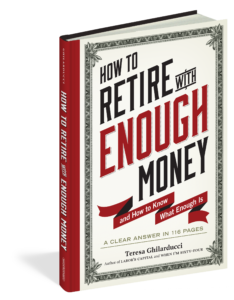This year, vow to increase your financial literacy and save for your future. This short piece, excerpted from Teresa Ghilarducci’s How to Retire with Enough Money, will help you choose the right retirement plan for you.
IRAs are tax-advantaged retirement accounts for those who don’t have a 401(k) or pension through work. Also, people who leave an employer often roll over the contents of their 401(k) plans into an IRA. (Roll over means to transfer funds without incurring a tax penalty.) Most experts advise against rolling over into an IRA; instead, they advise keeping your money in your previous employer’s 401(k), even though you may end up with many 401(k) accounts scattered among your past employers. IRAs do not have the same fiduciary protection that 401(k) plans have, and the fees are even higher and the choices even worse than in a 401(k).
Traditional IRAs allow the employee to deduct contributions for the tax year in which they are made, and then the assets appreciate tax-free. The funds are taxed at the time of withdrawal (commonly called distributions), which the account holder is allowed to start taking at age 59.5, and must begin taking at age 70.5. The reasoning goes that income generally drops at retirement, and with lower income comes a lower tax bracket—so it’s better to be taxed then, instead of during one’s working years.
Roth IRAs were introduced in 1997. Roth IRAs are mainly good for individuals who expect to have a higher tax rate when they withdraw their income after age 59.5. A Roth IRA delays the tax advantage until withdrawals are made at retirement—but the contributions going into the plan are taxed.
 About the Book:
About the Book:
Here is a single-sit read than can change the course of your retirement. Written by Dr. Teresa Ghilarducci, an economics professor, a retirement and savings specialist, and a trustee to two retiree health-care trusts worth over $54 billion, How to Retire with Enough Money cuts through the confusion, misinformation, and bad policy-making that keeps us spending or saving poorly.
It begins with acknowledging what a person or household actually needs to have saved—the rule of thumb is eight to ten times your annual salary before retirement—and how much to expect from Social Security. And then it delivers the basic principles that will make the money grow, including a dozen good ideas to get current expenses under control. Why to “get rid of your guy”—those for-fee (or hidden-fee) financial planners that suck up valuable assets. Why it’s always better to pay off a loan or a mortgage.
There are no gimmicks, no magical thinking—just an easy-to-follow program that works.
Buy the Book
Amazon | B&N | Indiebound | Workman






No Comments